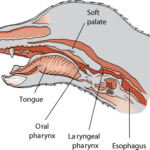Why Do Dogs Pull On Leash
Dogs are known for their playful nature, loyalty, and cute demeanor. However, one of the most common issues that dog owners face is their pets pulling on the leash during walks. This behavior can be frustrating and even dangerous in certain situations. In this article, we will explore why dogs pull on the leash and what you can do to prevent it.
The Root Cause
To understand why dogs pull on the leash, we need to delve into their evolutionary history. Dogs are descendants from wolves, who are pack animals with a strong social hierarchy. In a wolf pack, the leader or alpha wolf leads the pack while the other members follow behind. Wolves would have to walk long distances each day to hunt for food, and they developed a natural instinct to follow their leader closely.
When humans domesticated dogs thousands of years ago, they unintentionally reinforced this instinct by using leashes to control them during walks. Dogs learned that pulling on the leash could move them forward faster towards whatever they were interested in – whether it was a squirrel across the street or another dog ahead.
Additionally, some breeds like Huskies and Alaskan Malamutes were bred specifically for sledding and other activities requiring them to pull heavy loads. These breeds have an inherent desire to pull as part of their genetic makeup.
Subconscious Reinforcement
Another reason why dogs pull on the leash is subconscious reinforcement. When dogs pull on the leash, they often get what they want – whether it’s moving faster towards something interesting or being able to stop and sniff around. Over time, dogs learn that pulling gets them what they want and continue doing so.
Moreover, if you’ve ever walked your dog before, you may have noticed that when your pet pulls on the leash, you tend to tug back instinctively. Unfortunately, tugging back only reinforces this behavior further as it becomes a game of tug-of-war between you and your dog.
Training Techniques
To prevent your dog from pulling on the leash, it’s essential to train them using positive reinforcement techniques. Positive reinforcement means rewarding your dog for good behavior instead of punishing them for bad behavior.
One effective technique is to stop walking and stand still whenever your dog pulls on the leash. This approach teaches your dog that pulling does not get them closer to their goal, but rather, it makes them stop in their tracks. When your dog stops pulling, reward them with a treat or praise and continue walking.
Another technique is to teach your dog to walk beside you using a command like “heel.” Begin by standing next to your dog and holding a treat close to their nose. Then, take a few steps forward while keeping the treat close to you. As your dog follows you, say “heel” and give them the treat when they reach the desired position. Repeat this process until your dog learns to associate the command with walking beside you.
Final Thoughts
In conclusion, dogs pull on the leash due to their evolutionary history and subconscious reinforcement. However, with proper training techniques such as positive reinforcement and teaching them specific commands like “heel,” you can prevent this behavior. Remember to always reward your furry friend for good behavior instead of resorting to punishment. With patience and consistency, you can enjoy walks with your pet without any frustrating pulling episodes!



